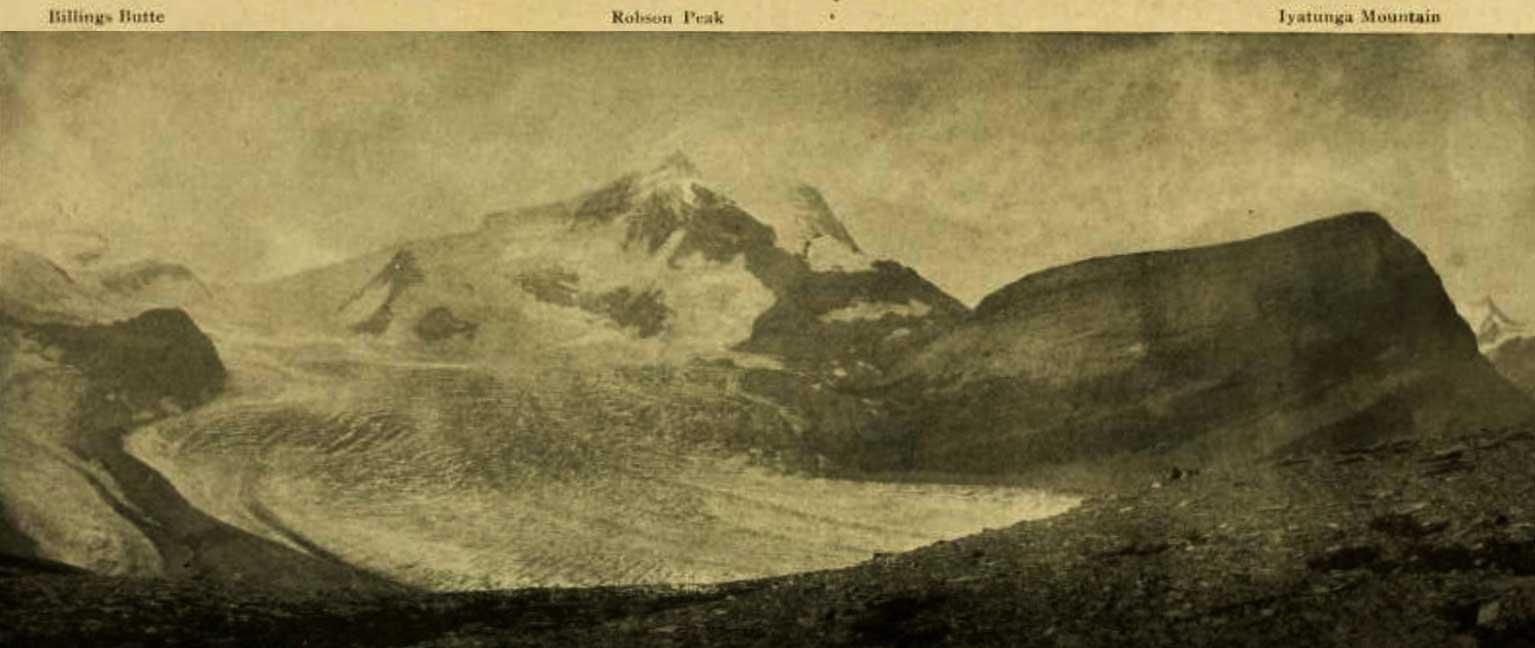Flows S into Hugh Allan Creek
52.445 N 118.6506 W — Map 083D07 — Google — GeoHack
Name officially adopted in 1963
Official in BC – Canada
See Mount Blackman.
See Mount Blackman.
Formerly called Lindsay Spur, this railway siding was named after a Black family. It was the site of a internment camp for Canadians of Japanese descent during World War II.
Around 1930, Red Johnson trapped four small marten on this tributary of the Raush River. “They were pure black with white ears, and were worth big money in them days,” said fellow trapper Jack Damon in the 1970s. “He got $90 a piece for them. That was the end of his trapping for that year.”
The English town of Bingley was home to Walter Butler Cheadle [1835–1910], who with William Wentworth Fitzwilliam Milton [1839–1877] crossed the Yellowhead Pass Pass in 1863.
While camped on the shore of Buffalo Dung Lake (Yellowhead Lake), their Iroquois guide assured the travelers that two nearby mountains “should be known from that time forth as ‘Le montaigne de Milord’ and ‘Montaigne de Docteur.’ We, however,” wrote Cheadle, “took the liberty of naming them Mount Fitzwilliam and Mount Bingley.”

Billings Butte – Robson Peak – Iyatunga Mountain. Panonamic view of the Robson massif and adjoining mountains, with the great Hunga glacier in the foreground.
Photo: Charles D. Walcott, 1912 National Geographic Magazine 1913 [accessed 15 February 2025]
One of the names proposed by Dr. Coleman for a prominent monadnock that is surrounded by ice, east of Mount Robson, is ‘ The Extinguisher ‘ and Mr. Wheeler has adopted the name on his map. I presume Dr. Coleman had in mind the conical extinguisher used in putting out candles in the olden times. It so happens that that particular mass of rock carries a very important bed of Cambro-Ordovician fossils, and will be referred to many times in the future in literature. The name “Billings” is proposed for this butte in honor of E. Billings, the distinguished Canadian paleontologist, who described the famous Cambro-Ordovician fauna of Point Lévis, Province of Quebec, and Western Newfoundland.
His proposal was not accepted by the Geographical Board of Canada.
Bill Johnson was born in Vaasa, Finland, in1899. He came to Canada at age 24, landing in Halifax, and travelled west to work in logging camps at Shere, Giscome, and Sinclair Spruce. He finally settled in the Dunster area, where he spent 22 years working for the Bert Blackwood farm. He was janitor of the old Dunster Community Hall for many years. When the Blackwoods sold their farm in 1960, Bill moved to a two-room house at top of Dunster Hill.
Labelled “Great Shale Hill” on BC-Alberta boundary sheets. The summit ridge extends over four miles westward from Shale Pass along the Continental Divide, forming the interprovincial boundary.
Sarah Bevier [1861–1927] is buried in the McBride cemetery. Ether Bevier [1882–1959] married George Clarence Monroe [1885 –1974] and settled on Mountainview Road in 1914. George and Ethel were market gardeners, farmers, and preachers. They initiated the McBride Farmer’s Institute and the McBride Fall Fair. They were Mountainview School trustees establishing the school in its permanent location while promoting Mountainview as a place to settle and raise families. They provided housing for settlers answering Ethel’s promotions in The Free Press.
“To think that I helped skid logs for that little shack brought back many memories of the the people I knew around there,” recalled Alex Cadieux de Courville in 1976. “Like the people of the West End: Bevier, Monroe, Emery Olden, and a good many others.”
This “splendid snow mountain” was christened Mount Bess by guide John Yates [1880– ] of Lac Ste. Anne, Alberta, during the 1910 expedition of John Norman Collie [1859–1942] and Arnold Louis Mumm [1859–1927] to the Mount Robson region, during which they made the first ascent of Mount Bess.
Elizabeth “Bessie” Ann Gunn [1892–1960] was a member of the expedition. She was the daughter of Peter Gunn [1864–1927] and Mary (Ritch) Gunn. Peter Gunn had come to Canada from Scotland in 1883 to work for the Hudson’s Bay Company. His wife-to-be Mary, from the Orkney Islands, followed a few years later. Bess was born while the family lived in Fort St. John, where Peter was factor for the HBC. In 1900, after postings in Grouard and Dunvegan, Peter became factor at Lac Ste. Anne, his last posting. Lac Ste. Anne was was a stop for packers, mountaineers, and trappers heading from Edmonton to Jasper and points north. Yates was a local packer and mail-carrier, and Bess worked at the post office. Old-timers say Yates had a crush on her.
In 1911 Bess married Charles Milton McKeen [1885–1972], a local homesteader and teamster who was later bookkeeper, magistrate, judge, and from 1921 to 1935, member of the Alberta Legislative Assembly for Lac Ste. Anne, representing the United Farmers of Alberta (Peter Gunn had earlier been Liberal MLA for the same riding). Bess spoke fluent Cree and was often called upon as interpreter. She died in the Mayerthorpe, Alberta, hospital.